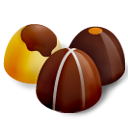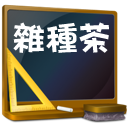Yi-Shin tea garden



We’ve been looking forward to the trip today—going to the tea garden and know more about the Port Tea. We talked and laughed along the whole way since we were all very excited. It was even more unique than going to amusement parks! Once we arrived at the tea garden, we dressed ourselves with the bamboo basket, preparing for a hard-working day.
In the beginning, the hostess Mrs. Hsiung introduced us the tea trees. She also taught us how to pick tea. The tea leaves could not be picked individually, but with the fresh tips-- the so-called “one-tip two-leaf”.
Organic Farming Know by Sight
As the technology develops, the agriculture returns to its natural way—the organic farming. Mrs. Sho-Chu told us that the Port Tea is cultivated at ManjhouTownship. Since the land in this area is infertile, there’re only a few blights, the pesticides are therefore unnecessary. However, since the pesticides could not be seen by human eyes, the tea must be sent for official examination before the tea is recognized as an organic product. Besides the certificate wins from the examination, Mrs. Sho-Chu also asked us to observe the green lawn in the tea garden. We found the weeds growing together with the tea plants. Their existence further proved that pesticides was not applied to this garden. In fact, one doesn’t need the certificate but pay attention to the weeds at the lawn and the spider webs between the branches—they are the best provement of a pesticide-free organic garden.
Seed、worm and flower




The second class was for how to tell the tea seed and to collect them. The tea seed looked cute, like a rice dumpling. Teacher asked us to collect them and tried to grow them at home. Maybe we could cultivate the Port Tea by ourselves!
Mrs. Hsiung suddenly pointed to the thing in the picture and asked us to take a guess of what it is. We all had the same answer: a dead leaf. Mrs. Hsiung then answered us that it is actually the thing all tea farmers scare the most. What do you think it is?
It took us quite a while to open this “dead leaf.” We surprisingly found a bug lying inside! Mrs. Hsiung told us its name: tea bug. Once the tea bugs are found in a tea garden, the tea farmers could only remove them by applying pesticide. They are a pest with high vitality.
The picture on the right depicts the flower of tea plant, beautiful but very few. Mrs. Hsiung told us that she always collects the flowers together during tea harvesting. The flower of tea plant could be mixed with the tea leaves and made into the Port Tea to enforce the fragrance of tea.
The Sweetness after


This is the “one-tip two-leaf” I picked! I guess there is still space for improvement. The weeds in tea garden were also troublesome since they would rob the tea plants of the ingredients of land. So we also plucked them off.
After a hard day’s work, Mrs. Hsiung awarded us the prize—Port Tea. Though Port Tea tastes bitter, we don’t feel thirsty after a few cups of the tea. It seems that it’s more thirst quenching than the coke! We happily ended our trip by the tea table.






